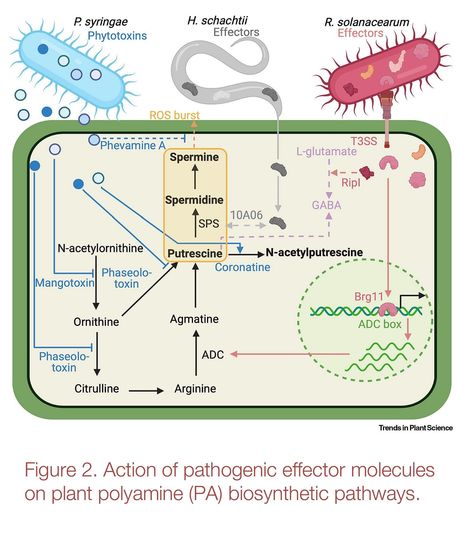Author: Miguel A. Blázquez.
Annual Review of Plant Biology (2024)
Abstract: "This review focuses on the intricate relationship between plant polyamines and the genetic circuits and signaling pathways that regulate various developmental programs and the defense responses of plants when faced with biotic and abiotic aggressions. Particular emphasis is placed on genetic evidence supporting the involvement of polyamines in specific processes, such as the pivotal role of thermospermine in regulating xylem cell differentiation and the significant contribution of polyamine metabolism in enhancing plant resilience to drought. Based on the numerous studies describing effects of the manipulation of plant polyamine levels, two conceptually different mechanisms for polyamine activity are discussed: direct participation of polyamines in translational regulation and the indirect production of hydrogen peroxide as a defensive mechanism against pathogens. By describing the multifaceted functions of polyamines, this review underscores the profound significance of these compounds in enabling plants to adapt and thrive in challenging environments."



 Your new post is loading...
Your new post is loading...









